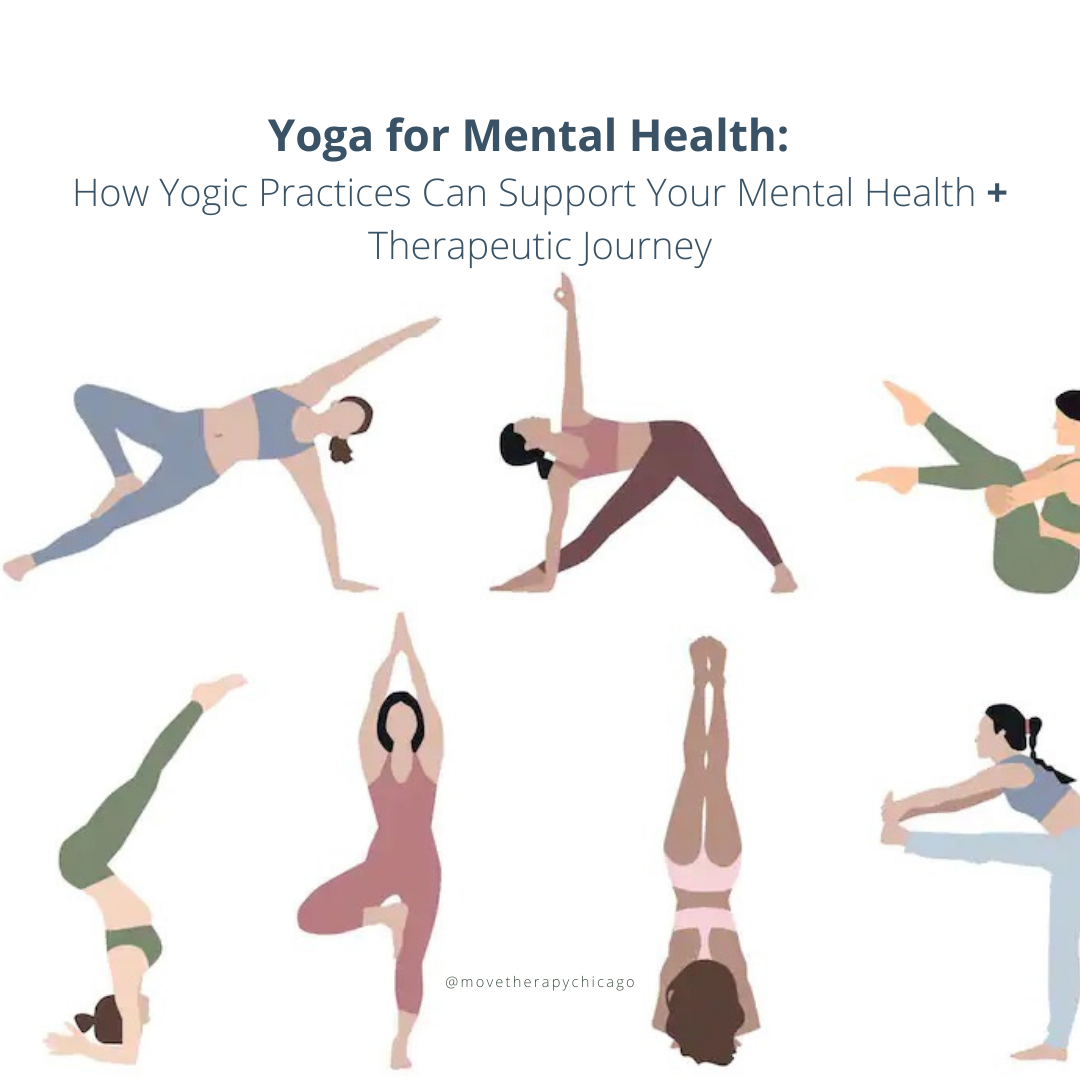In western culture, yoga has become known for its physical practice, often characterized by challenging postures and hyper-flexible practitioners. Although yoga is a great form of exercise and can lead to great physical benefits, it is important to remember that the physical practices were created to support the mental and spiritual goals of the practice. The ancient practice of Yoga, created over 5,000 years ago in Northern India, was created as a set of teachings and principles one could follow to seek ‘enlightenment’. This practice consisted of spiritual techniques and physical practices to integrate the mind, body and spirit, and ultimately to achieve this state of enlightenment or oneness with the universe. Although this goal is quite lofty, yoga can be used in more subtle ways to support mental health and wellness. Modern practitioners often find the principles of personal inquiry and mindfulness to be easily transferable to modern life. Additionally, yoga can be very supportive to the goals set in therapy, and can be a great way to practice taking care of the mind and body outside of the therapy room.
Here are several ways that yoga can be supportive to mental health treatment:
Yoga is Effective in Decreasing Symptoms of Anxiety and Depression.
One of the most significant benefits of yoga is that it has been proven to significantly decrease symptoms of anxiety and depression when practiced consistently. Here, the American Psychological Association outlines multiple studies that illustrate the mental health benefits of the practice. Practitioners find that yoga helps them to stabilize mood, and can be a great supplemental intervention to traditional talk therapy. Many studies have found that symptoms such as excessive worry, depressed mood, ruminative thoughts, sadness, and negative outlook decrease with consistent practice, and there is often an increase in positive outlook, cognitive abilities, and mental focus.
https://www.apa.org/news/press/releases/2017/08/yoga-depression
Yoga Increases Body Awareness
Do you find yourself so busy throughout the day that you forget to check in with your body? Many people who suffer with mental health issues find that they are disconnected from their bodies and have trouble listening to their body’s instincts. These messages from the body may warn us we are burnt out, scared, or angry. Yoga teaches you to notice what is happening in the breath and the body, which may help you observe shifts in your physical or emotional state. Our nervous systems work to either amplify the senses with the sympathetic nervous system, or to relax the senses with the parasympathetic nervous system. By tuning into the body in the yoga practice, you can observe the shifts in sensations of the body and feel empowered in your ability to sense and shift the tone of the nervous system. This increased awareness can be very supportive to therapy and can help clients reach a better understanding of themselves.
Yoga Teaches Mindfulness Practices
Yoga is also beneficial in supporting the practice of mindfulness. Mindfulness is the practice of becoming aware of the present moment, on purpose, and without judgment. By bringing the mind’s awareness to the body and the breath, practitioners are able to decrease distraction and become connected to the current moment. The body becomes an anchor to the present moment, which assists with focus in meditative practices. These mindfulness principles can be translated into daily life. You may notice after a consistent yoga practice you are better able to focus into single moments throughout the day and take pauses for a mindful breath.
Yoga Encourages a Balanced Lifestyle
Unlike more modern movement practices, yoga makes space for relaxation and prioritizes a balanced approach to movement for the body. There are many schools of physical yoga practice, including restorative yoga which implements restful poses that are fully supported by props and held for long periods of time to support relaxation.
Yoga teaches that there are 3 energetic forces that support all living things, these are called Gunas. The most energetic Guna is Rajas, which is an energy of action, strength, and persistence. The most restful Guna is Tamas, which is an energy of stability, slowness, and stillness. Many yoga practices are intended to bring balance to these energies, and towards the Guna of Sattva, which is the energy of consciousness. You can picture how these ideas can support clients of therapy in finding balance. If a client is overwhelmed with the desire for productivity, a therapist may encourage rest and support the client in increasing Tamas energy. On the other hand, a therapist could support someone who is collapsed in sadness to find Rajas energy by setting gentle goals.
Yoga Provides the Mental Health Benefits of Exercise in an Accessible Manner
Exercise in general offers many great benefits both physically and mentally. Many people find that regular movement increases self confidence and supports mood regulation. In fact, many studies have shown that it can be as effective as antidepressant medication when integrated regularly. Exercise has amazing effects on the brain, such as increased neural growth and reduced inflammation. It also increases the release of endorphins, powerful chemicals in your brain that create energy and pleasure. Because of the many levels and styles of yoga, people of various ages and abilities can access the practice. As with any movement, many people find that after challenging themselves effectively in their body, they feel increased self esteem and a sense of accomplishment.
